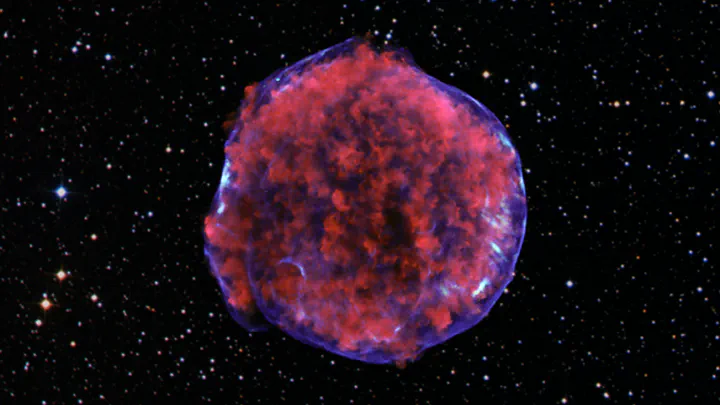Electron acceleration at shocks in supernova remnants
 SN 1572, credit: X-ray: NASA/CXC/Rutgers/K.Eriksen et al.; Optical: DSS
SN 1572, credit: X-ray: NASA/CXC/Rutgers/K.Eriksen et al.; Optical: DSSThe primary acceleration mechanism is Diffusive Shock Acceleration, where particles gain energy by crossing a shock multiple times. However, the particles must have Larmor radii comparable to the shock width to be able to participate in this process. This means that electrons must be pre-accelerated to suprathermal energies, which is known as the electron injection problem.
Particle dynamics in plasma is a complex phenomenon, and its study on electron kinetic scales requires the use of the particle-in-cell approach: first-principles simulations for collisionless plasma. Even with the power of modern supercomputers, these numerical experiments are computationally demanding.
The current focus of the project is on electron injection at oblique SNR shocks and the influence of pre-existing turbulence on electron dynamics at shocks. At oblique shocks, shock-reflected electrons form an extended region called the foreshock. They drive instabilities there, which leads to favourable conditions for efficient energy gain. The second part of the project involves studies of shocks propagating in turbulent media. We have found that pre-existing density fluctuations affect the physics of high-Mach-number shocks.